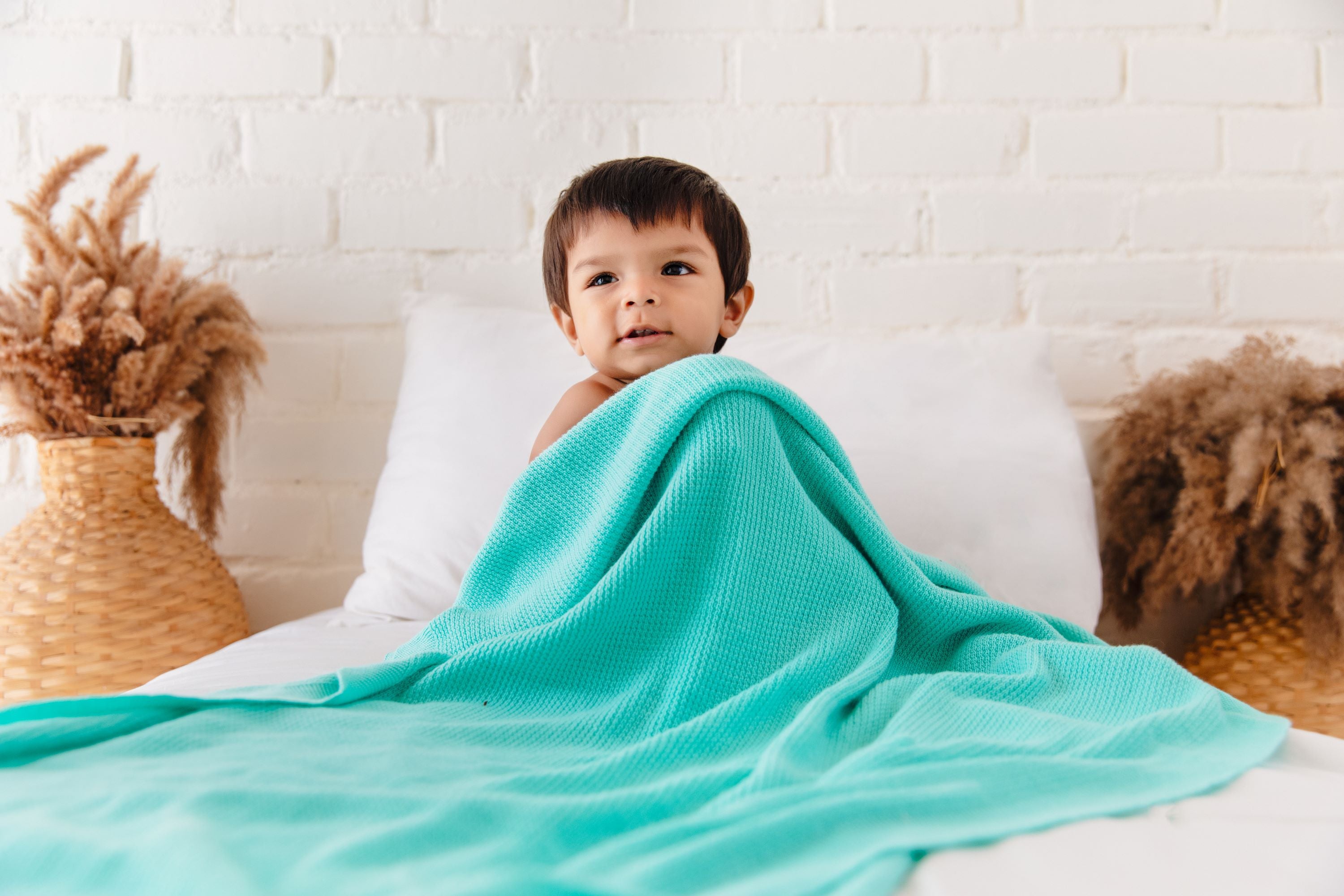
Let’s Talk Textile Dermatitis – Is Your Baby Allergic To Their Clothes?
Your choice of clothing matters.
In fact, it is one of the most important decisions that you will make on a daily basis.
What you choose to put on your body will influence your health and wellbeing, reflect your personality and style, as well as govern your comfort level and ease.
Did you know, your skin could negatively react to the chemicals present in certain fabrics that are used to make your clothing?
Allergic reactions are common in synthetic and man-made materials such as polyester, nylon and rayon.
For this reason, it’s important to pick your wear with care.
In this blog, we will go over important details about textile dermatitis and introduce you to safe clothing alternatives.
What is Textile Dermatitis?
Textile dermatitis is a form of contact dermatitis which occurs when your skin has a negative reaction to a specific material or fabric that it has come into contact with.
The source of the skin manifestation could be a reaction to the textile fibres, or more commonly, a contact allergy to the chemical additives and tanning agents that are used in processing the fabric.
Causes of Textile Dermatitis
Textile dermatitis could develop and spread due to the following factors:
- Synthetic / manmade fibres - polyester, nylon, rayon, rubber, fibreglass, and spandex.
- Fabric additives - formaldehyde resins, para-phenylenediamine, azo and anthraquinone based dispersal dyes, flame retardants.
- Contact allergens - chrome, cobalt, latex and rubber accelerators.
Other aspects that play a part in aggravating a negative reaction include:
- Tight clothing
- Hot, humid climate
- Tendency to sweat
- Predisposition to eczema
Symptoms of Textile Dermatitis
The symptoms of textile dermatitis include red, dry, scaly and itchy skin.
It can develop on the chest, back, abdomen, underarms, legs, and back of the knees.
This is similar to eczema and is likely a short-term reaction.
However, in more severe cases, one could experience:
- Shortness of breath
- Abdominal pain
- Runny or stuffy nose
- Skin tenderness
- Skin discoloration
The allergy could develop as quickly as a few hours, or as long as a few days, after coming into contact with the fabric.
How To Prevent Textile Dermatitis
Follow these simple tips to ensure that you or your family are not prone to an allergic reaction:
- Pick light-coloured clothing as these are made with less dyes.
- Choose natural fibres such as 100% organic cotton, bamboo and hemp.
- Look for clothing that is certified to be free from chemicals, for e.g., GOTS certification.
- Avoid tight-fitting clothing, instead, opt for more breathable silhouettes.
- Steer clear of clothing that is labelled as ‘dirt-repellent’, ‘no-iron’ or ‘wash separately, as these are more likely to contain chemicals.
- Opt for a mild, free and clear laundry detergent.
- Avoid fabric softeners and fragrances.
Sustainable clothing alternatives
Invest in sustainable clothing brands for comfort, safety, ease of wear, and peace of mind.
Ensure long-lasting healing with organic cotton apparel, sleepwear, bedding and towels.
Brands like Greendigo work with natural fibres and non-toxic dyes.
We are certified by GOTS, offering an additional layer of transparency and trust.
Explore styles that are functional and designed to offer skin satisfaction!
As a concerned parent, you will want only the best for your little one.
That’s us – a fuss-free and itch-free brand.



Leave a comment
This site is protected by hCaptcha and the hCaptcha Privacy Policy and Terms of Service apply.